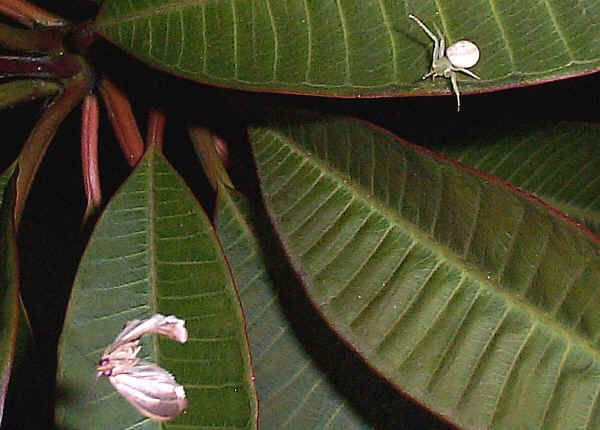|
|
Escape strategy of insects.
Escape strategy of insects.
- - Active
- * counter-attack
- - stinky liquid, repellent chemicals to deter predation.


- - Caterpillars of swallowtail butterfly possess glands behind the head called
- osmeteria, which they evert when threatened and which possess a secretion
- effective against ants.
- - urticating hairs
- - Some caterpillars have special spines that containing itchy or painful venoms.
- When a predator brushes against the spines, the venom takes effect.


- - sting and bite,
- - modified ovipositor, An ovipositor is the structure at the tip of the abdomen,
- usually used for depositing eggs but in this case for injecting venom.


- - warning colour
- - Most typical are insects that are colored black and either orange or yellow.
- - Monarch butterflies display the flashy orange and black colors. They are highly
- visible but may be very dangerous to birds. The larvae feed on milkweed and
- pick up poisonous chemicals called cardiac glycosides, which are toxic to the
- heart. The hypothesis is that once a bird tasted a Monarch it might learn to
- associate the warning colors with the nausea associated with the poisonous
- chemicals, which impart a bitter taste.


- - mimic other aggresive species

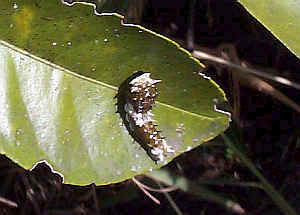
- - mimic again the predators - their predators, the waste,
- Explore the image that will be avoided by predator, such as predator's predator, predator's droppings.
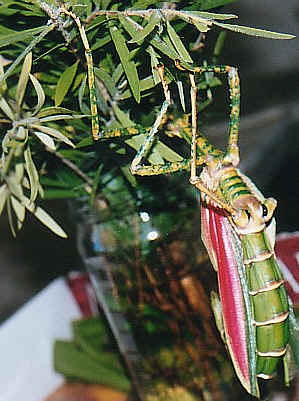
- - Startle display. shock - by visial effect, sound effect, smell
- - eye patterns,
- - smell by caterpillar, sound by stick insects and beetles
- * Behaviour

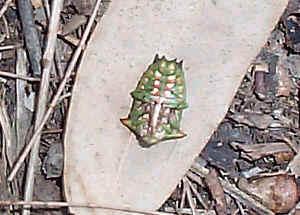
- - Fast running, flying, jumping
- - fuzzy flying path
- - play dead - death feigning

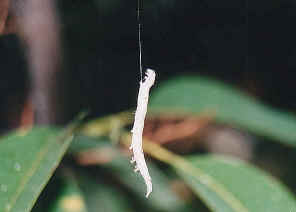
- - drop to ground - reflexive dropping, passive drop
- - slide and drop
- - drop and play dead
- - drop and fly
- - drop with safety line

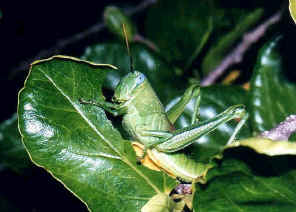
- - fly in regular path, to avoid trap and dangous
- - not move, keep still - remaining motionless


- - threat displays
- - praying mantis strikes out at attacker with forelegs


- When they sense the danger, the Acacia Leaf Beetles hide their legs and antenna under. When we come closer, like most other small beetles, they slide to the edge of the leaf and drop to the ground. So we always put our hand under the leaf when we want to have a closer look. When the beetle first drop onto our hand, it hides all its legs and antenna under its body and do not move. After a while, when its feel there is no danger, it will walk around on our hand. The second picture shows the beetle on Tony's finger.
- - Shell cover
- - Cuckoo wasps roll up in ball when threatened
- - Fecal shield is used to block bites of ants.
- - Green lacewing larvae plucks waxy wool from body of wooly alder aphid, its
- prey. It sticks the material on its own body, which protects it from ants that herd
- and protect the aphids for honeydew. If you pull off the material, then ants attack
- the lacewing.
- - rthmyic motiom, not seen by insect eye?
- * Avtive time period

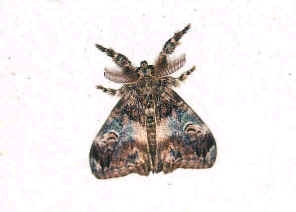
- - active at night only
- * use other way of communicating, not by eyes
- * low temperture problem
- - active at evening
- * Hatbita
- - to live in water, underground, inside wood
- - build shelter
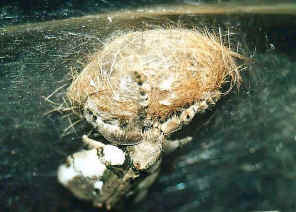

- - Making nests, cocoons, cases, webs
- - parasite inside others body
- * alert system
- - detect the predator first
- - see them first
- - hear them first (again bats)
- - feel them first (eg. spiders)
- - communication between same species
- - warning signals
- - feeding in group
- - group power
- - Passive
- * Not eatable, tonxic
- - look not eatable, mimic
- * Hard cover shell
- * hiding, avoid being detected

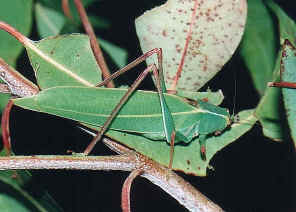
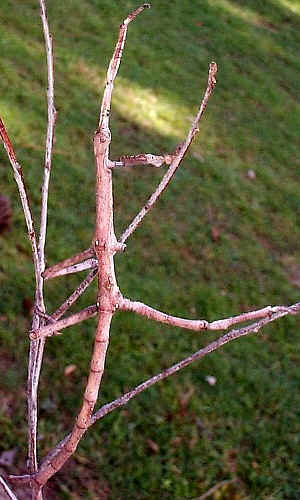
- - mimic as plants material - camouflage, (cryptic coloration)
- - leaves, twigs, bark, sand surface,
- - patterned to blend in with their surroundings.
- - colour pattern broken its body shape
- - leaves mining, a good way to avoid parasite,
- * body structure
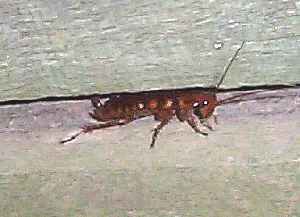
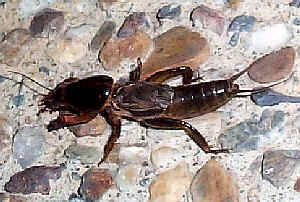
- - thin to move in crack
- - tube to move in tunnel
- - Hard shell, spiny, hairy
- - Others
- * Alistisum

- - bees
- - aphids - large in number, genetically identical, a lot of oneself
- - do not spend energy and material in defence
- * not be the constant food sourse
- - Period Cicada
- - Being rare - stick insects
- * Moths scale again spider webs
- * Short adult life to avoid predation except there is the reasons
- - parental care
- - socitial species
How many strategies do butterflies use to avoid predators?
On studying the butterflies, we observed the following strategies that butterflies use to avoid predators. Compared with other insects, butterflies are colourful and with different pattern. Some of their escaping strategies are based on the variety of colour pattern.
Eye spot pattern
Eye spot patterns are common in butterflies. Many species have this pattern on top side, underneath or both side of their front and hind wings. Those spot help the butterflies to survive in two ways. Some butterflies have two big eye spots on their hind wings. When they are at rest, they cover the eye spots by the front wings. When a predator come close, the butterfly will suddenly show the eye spots, to scare them away. Some other butterflies with only small eyespots. Usually those spots are on the edge of their wings, the less critical part of their body. Those spot are used to puzzle the predator to use it as target. If being attached, the butterfly just loss a small bit of wing edge and fly away. Sometimes we find find a Evening brown butterfly with a small triangular price of wing is missing, just like being biten off by a bird.
Butterfly tail
Some Butterflies have tails on their hind wings, such as the Swallowtail butterflies and the Coppers. Some of them, their tail and their eyespot pattern, may be confused as antenna and eyes by some predators, and predict their moving direction wrongly so that they can fly away.
Being poisonous and with warning colour
Some butterflies, like the Wanderer, is poisonous or distasteful. It is an advantage if they can be easily distinguished by their predators. The bright colors serve to warn birds or other predators that this butterfly is bad-tasting.
Mimic
The Common Crow and the Dwarf Crow look similar. In some case two different but both are distasteful butterflies evolved to mimic each other. This enhance the warning colour effect. In other cases, other butterflies, although perfectly edible, may have colours that mimic the bad-tasting species and therefore gain protection for themselves. Mimicry is a interesting evidence of evolution.
Camouflage
The Evening Brown is hardly seen when it rests among the dry leaves. Certain color patterns may help the butterfly blend into its background and be protected from birds or other would-be predators by "background resemblance."
Flying fast
Some butterflies are flying very fast. Their flying pattern is different with those butterflies with warning colour protection. We can see the Wanderer gliding in the air but will never see the Blue Triangle flying in straight line. The Blue Triangle flying very fast and in a zig-zag path. Its wings will not stop flicking even it stop and visiting a flower. We can catch the Wanderers much easier than the Blue Triangle.
Scales to escape from spider wed
We seldom see the butterflies caught by the spider web. The scales on the butterfly wings are the major reason. The butterfly scales are important weapons evolved to defend them from the spider web.
